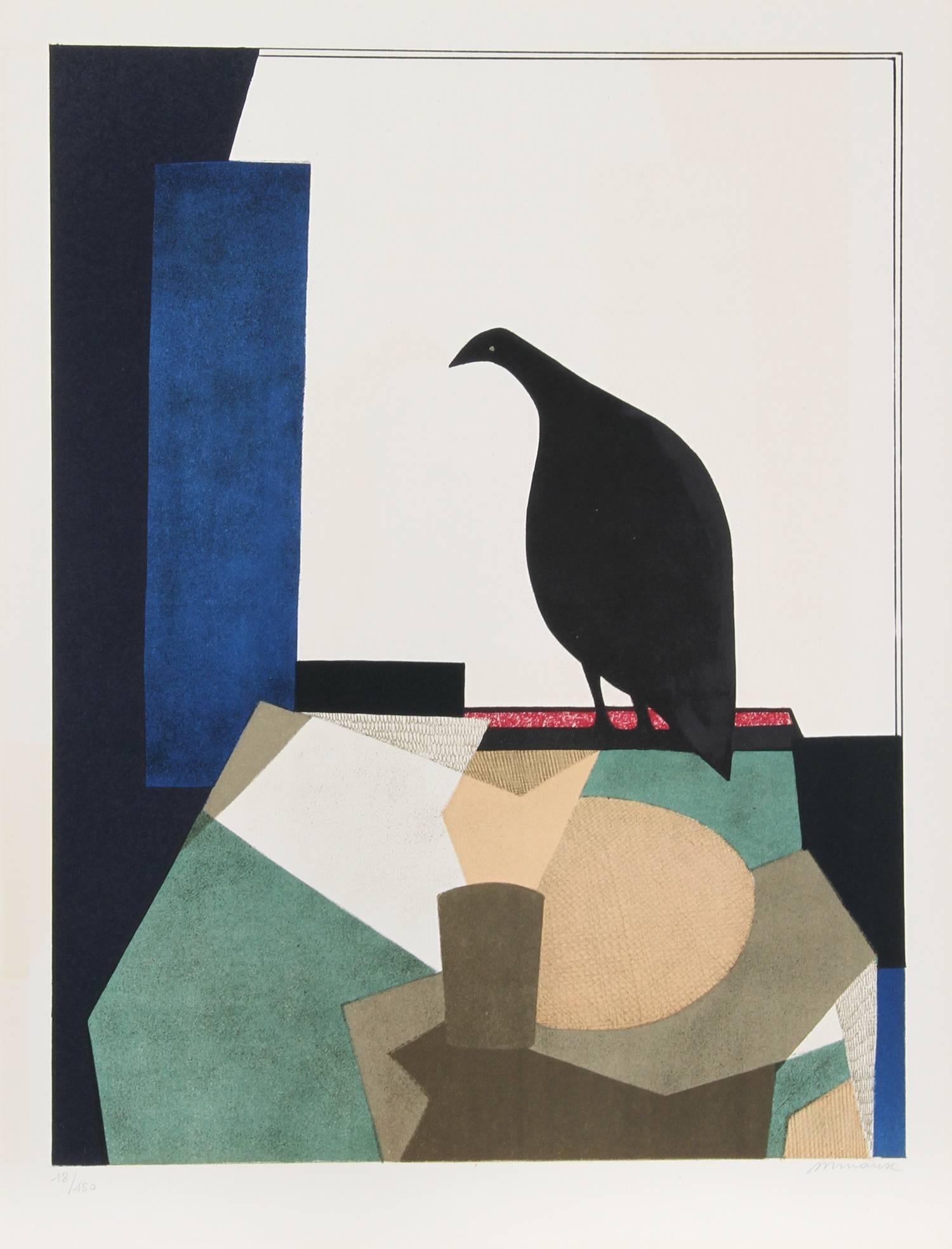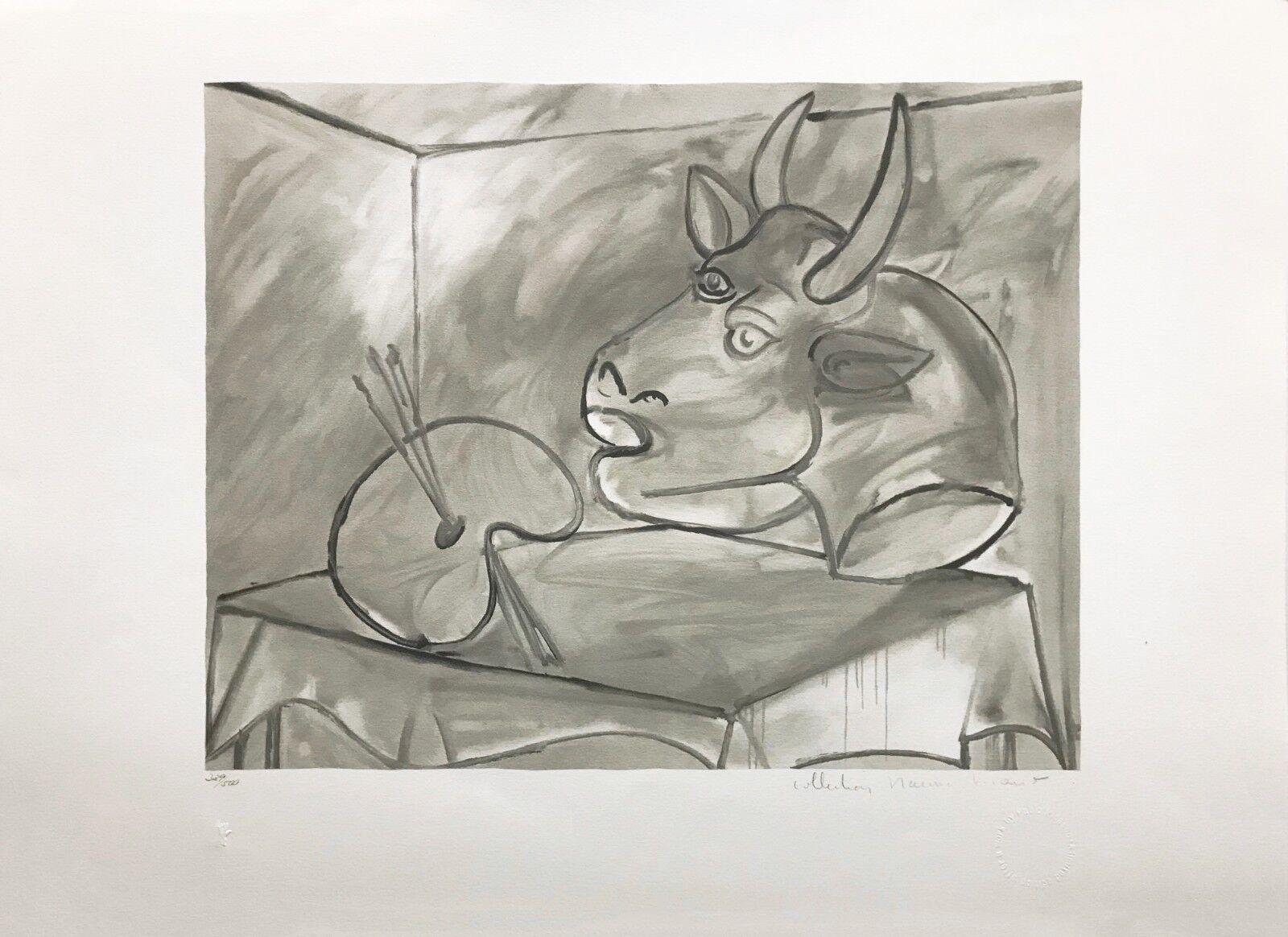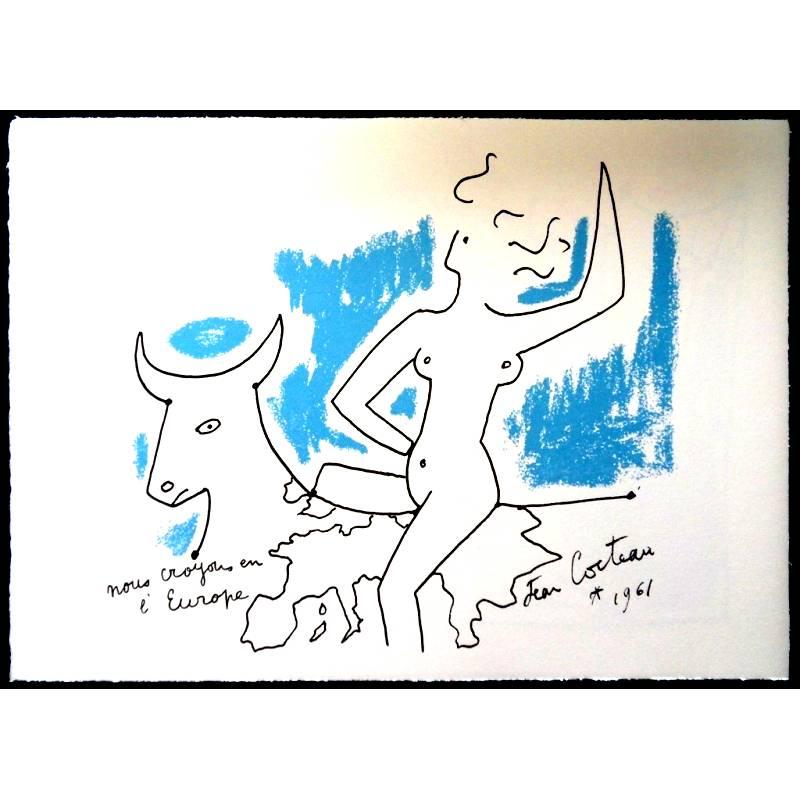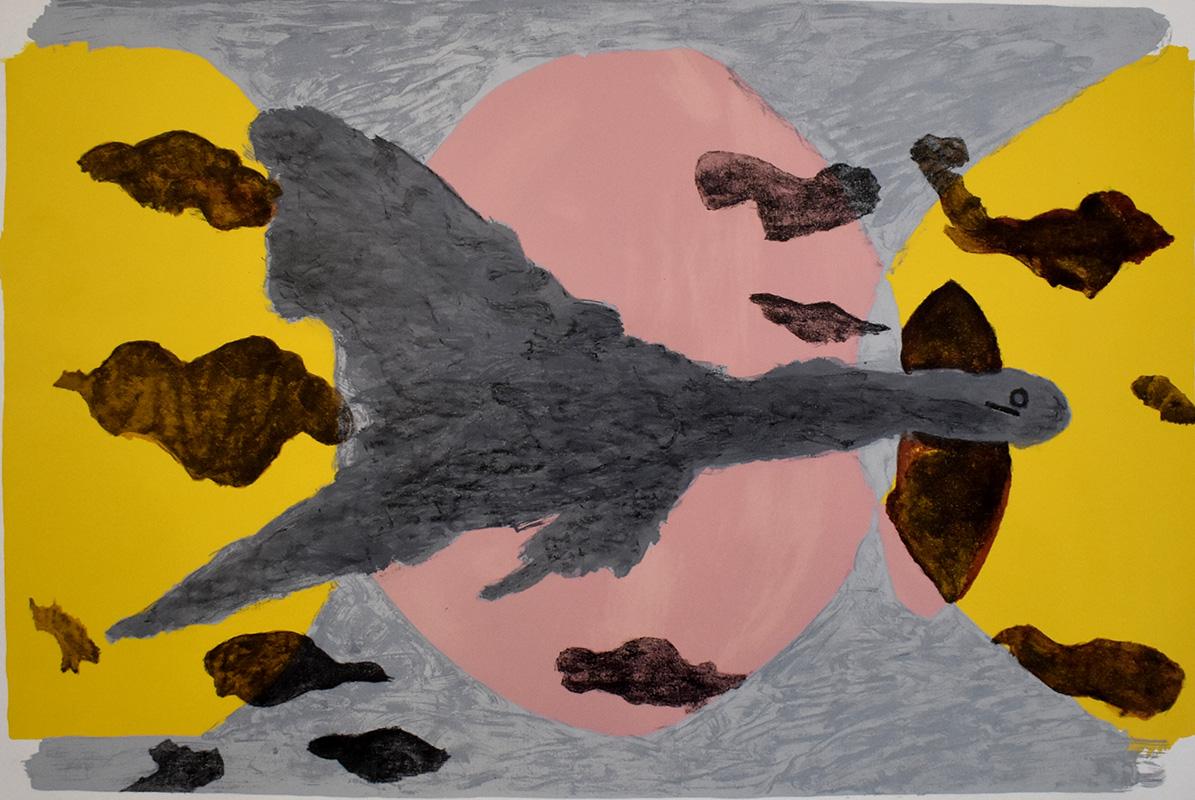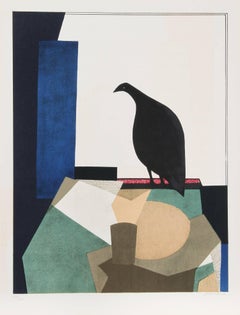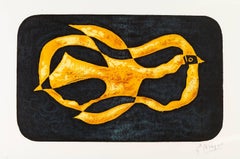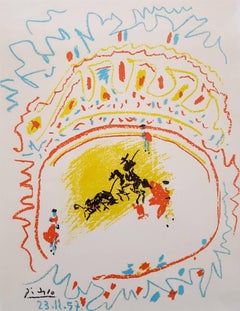
La Petite Corrida
View Similar Items
Pablo PicassoLa Petite Corrida1971
1971
About the Item
- Creator:Pablo Picasso (1881-1973, Spanish)
- Creation Year:1971
- Dimensions:Height: 22.25 in (56.52 cm)Width: 19.25 in (48.9 cm)
- Medium:
- Movement & Style:
- Period:
- Condition:
- Gallery Location:Saint Augustine, FL
- Reference Number:1stDibs: LU12122286813
Pablo Picasso
One of the most prolific and revolutionary artists the world has ever seen, Pablo Picasso had a tremendous impact on the development of 20th-century modern art. Although he is best known for his association with the Cubist movement, which he founded with Georges Braque, Picasso’s influence extends to Surrealism, neoclassicism and Expressionism.
“Every act of creation is, first of all, an act of destruction,” the Spanish artist proclaimed. In Picasso's Cubist paintings, he emphasizes the two-dimensionality of the canvas, breaking with conventions regarding perspective, foreshortening and proportion. Picasso was inspired by Iberian and African tribal art. One of his most famous pre-Cubist works is Les Demoiselles d’Avignon (1907), a painting considered immoral and shocking at the time for its depiction of nude women whose faces resemble Iberian tribal masks.
Picasso made many portraits in this style, most often of the women in his life, their expressively colored faces composed of geometric shards of surface planes. In Woman in a Hat (Olga), 1935, he painted his first wife as an assemblage of abstract forms, leaving the viewer to decipher the subject through the contrasting colors and shapes. Picasso was a tireless artist, creating more than 20,000 paintings, drawings, prints, ceramics and sculptures. Tracing his life’s work reveals the progression of modern art, on which he had an unparalleled influence.
Browse an expansive collection of Pablo Picasso's art on 1stDibs.
- Common American Gull - Ring-billed Gull /// Ornithology Bird Seascape Beach SkyBy John James AudubonLocated in Saint Augustine, FLArtist: John James Audubon (American, 1785-1851) Title: "Common American Gull - Ring-billed Gull" (Plate 446, No. 90) Portfolio: The Birds of America, First Royal Octavo Edition...Category
1840s Victorian Animal Prints
MaterialsLithograph, Watercolor
- Set of Six Hand-Colored Lithograph Ornithological Prints from "The Ibis"Located in Saint Augustine, FLArtist: Philip Lutley Sclater (English, 1829-1913) Titles: "Crossoptilon Harmani (Tibetan eared Pheasant)", "Hypotaenidia Sulcirostris (Barred Rail)", "Craspedophora Duivenbodei (Dui...Category
1850s Victorian Animal Prints
MaterialsWatercolor, Lithograph
- Ivory Gull /// Ornithology Bird Audubon Seascape Beach Ocean Shorebird ShellBy John James AudubonLocated in Saint Augustine, FLArtist: John James Audubon (American, 1785-1851) Title: "Ivory Gull" (Plate 445, No. 89) Portfolio: The Birds of America, First Royal Octavo Editi...Category
1840s Victorian Animal Prints
MaterialsLithograph, Watercolor
- Snowy Heron /// John James Audubon Natural History Ornithology Snowy Egret BirdBy John James AudubonLocated in Saint Augustine, FLArtist: John James Audubon (American, 1785-1851) Title: "Snowy Heron" (Plate 374, No. 75) Portfolio: The Birds of America, First Royal Octavo Edition Year: 1840-1844 Medium: Original...Category
1840s Victorian Animal Prints
MaterialsWatercolor, Lithograph
- Arctic Fox /// Natural History Animal John James Audubon Watercolor LithographBy John James AudubonLocated in Saint Augustine, FLArtist: John James Audubon (American, 1785-1851) Title: "Arctic Fox" (Plate 121, No. 25) Portfolio: The Viviparous Quadrupeds of North America, Imperial Bow...Category
1840s Victorian Animal Prints
MaterialsWatercolor, Lithograph
- Herring or Silvery Gull /// Ornithology Bird John James Audubon Seascape BeachBy John James AudubonLocated in Saint Augustine, FLArtist: John James Audubon (American, 1785-1851) Title: "Herring or Silvery Gull" (Plate 448, No. 90) Portfolio: The Birds of America, First Royal Octavo Edition Year: 1840-1844 Medi...Category
1840s Victorian Animal Prints
MaterialsLithograph, Watercolor
- "Amour from the Helene Portfolio" Lithograph by Andre MinauxBy Andre MinauxLocated in Long Island City, NYArtist: Andre Minaux, French (1923 - 1986) Title: Amour from the Helene Portfolio Year: 1974 Medium: Lithograph, signed and numbered in pencil Edition: 150, XXX Size: 25.75 in. x 19....Category
1970s Cubist Animal Prints
MaterialsLithograph
- PIGEONSBy (after) Pablo PicassoLocated in Aventura, FLSelected from the personal collection inherited by Marina Picasso, Pablo Picasso's granddaughter. After Pablo Picasso's death, his granddaughter Marina authorized the printing of t...Category
1980s Cubist Animal Prints
MaterialsPaper, Lithograph
$1,025 Sale Price50% Off - After Georges Braque - Antiborée - LithographLocated in Collonge Bellerive, Geneve, CHLithograph after Georges Braque. Signed in the plate Edition of 150 Dimensions: 76 x 117 cm Bibliography: « Les Métamorphoses de Braque» of Heger de Loewenfeld and Raphaël de Cuttoli , Editions FAC, Paris, 1989. In 1961 Georges Braque decided with his laidary friend Heger de Loewenfeld to pick up certain of his works to in order to create artworks, this beautiful litograph is one of them. Héméra in the Mythology: In Greek mythology Hemera was the personification of day and one of the Greek primordial deities. She is the goddess of the daytime and, according to Hesiod, the daughter of Erebus and Nyx (the goddess of night). Hemera is remarked upon in Cicero's De Natura Deorum, where it is logically determined that Dies (Hemera) must be a god, if Uranus is a god. The poet Bacchylides states that Nyx and Chronos are the parents, but Hyginus in his preface to the Fabulae mentions Chaos as the mother/father and Nyx as her sister. She was the female counterpart of her brother and consort, Aether (Light), but neither of them figured actively in myth or cult. Hyginus lists their children as Uranus, Gaia, and Thalassa (the primordial sea goddess), while Hesiod only lists Thalassa as their child. The father of Cubism Three Cubist that distinguishes art historian periods were initiated and developed by Georges Braque: The Cubist Cézanne (1907-1909), Executive (1909-1912) and synthetic (1912-1922). Post-Impressionist and fawn, Braque no longer adheres to the contingency of a decorative way or the other. Cézanne’s paintings exhibited at the Grand Palais during the retrospective of 1907 are a revelation: Cézanne sought and invented a pictorial language. In his footsteps, Braque went to the South with the reasons of the Master. He returned with Estaque landscapes and surprising Ciotat it keeps Cezanne geometric model and retains the “passages” continuity from one surface to another to create the sensation of “turning around” of the object represented. But he wants to go after the consequences of the vision of Cezanne. In his paintings Houses in L’Estaque (1908) it simplifies the volumes of houses, neglects detail by removing doors and windows: the plastic rhythm that builds the table. Large Nude , a masterpiece of the period, can be considered the first work of Cézanne cubism . Systematizing and deepening Braque discoveries open the door analytical cubism. In 1909, his painting became more cerebral than sensual. The pattern is recreated in the two-dimensionality of the canvas, leaving aside any illusionistic perspective. In Still Life with Violin, objects are analyzed facets according to their characteristic elements, each facet referring to a particular view of the object. There are so many facets of points selected view: Table reflects the knowledge of the object and the ubiquity of the eye. Moreover, Braque is looking for the essence of the objects in the world rather than their contingency, which explains the absence of light source and use of muted colors (gray, ocher), contingent aspects of the object . But formal logic has stepped facets, erased any anecdote to the object and ultimately led to his painting a hermetic more marked on the edge of abstraction (see the series of Castle Roche-Guyon ). Braque, anxious to keep the concrete and refusing at all costs that the logic of Cubism takes the paintings to abstract, reintroduced signs of reality in his paintings in 1912 marks the beginning of Synthetic Cubism. Historians speak of “signs of real” rather than reality because what interests Braque, this is not to put reality into a table, but to create a painting which, by its language, refers to the real. To do this, he invented two major techniques XX th century inclusions and contributions. The inclusions consist of painting objects that have no real depth, materials (wallpaper in Nature morte aux playing cards faux wood is a pictorial inclusion) or letters (calligraphic inclusion in Portuguese ), made first brush and a few months later stencil. Contributions are defined in contrast with the collage on canvas of foreign materials: glued or sand paper, sawdust, etc.. Regarding the collages, Braque used for the first time in September 1912 a piece of adhesive paper imitating faux wood Compote...Category
1950s Cubist Animal Prints
MaterialsLithograph
- MINOTAURE AVEUGLE CONDUIT PAR UNE PETITE FILLEBy (after) Pablo PicassoLocated in Aventura, FLSelected from the personal collection inherited by Marina Picasso, Pablo Picasso's granddaughter. After Pablo Picasso's death, his granddaughter Marina authorized the printing of t...Category
1980s Cubist Animal Prints
MaterialsLithograph, Paper
$1,025 Sale Price50% Off - NATURE MORTE A LA PALETTE ET A LA TETEBy (after) Pablo PicassoLocated in Aventura, FLSelected from the personal collection inherited by Marina Picasso, Pablo Picasso's granddaughter. After Pablo Picasso's death, his granddaughter Marina authorized the printing of t...Category
1980s Cubist Animal Prints
MaterialsLithograph, Paper
$1,025 Sale Price50% Off - Jean Cocteau - Europe's Agriculture - Original LithographBy Jean CocteauLocated in Collonge Bellerive, Geneve, CHOriginal Lithograph by Jean Cocteau Title: Europe's Agriculture Signed in the stone/printed signature Dimensions: 33 x 46 cm Luxury impression from the portfolio published by Sciaky....Category
1960s Cubist Animal Prints
MaterialsLithograph
Recently Viewed
View AllRead More
Science Uncovers Hidden Truths behind Young Pablo Picasso’s Blue Period
From 1901 to 1904, Picasso limited his palette to bluish hues in producing some of his most famous early works. A new show looks at the recycled materials, hidden underpaintings, surprising influences and bohemian lifestyle that led to their creation.
Who Are the Most Popular Artists on 1stdibs?
Learn the stories of some of the world's most recognizable artworks and their makers.
